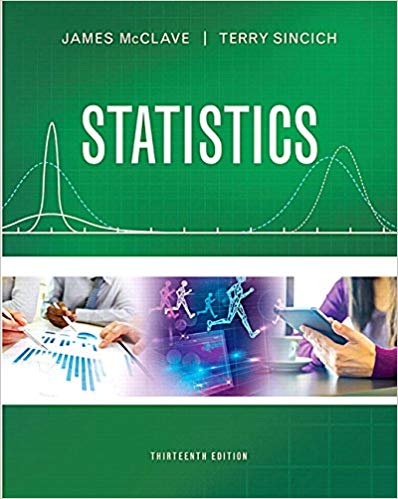A common transportation problem in large cities is congestion on the freeways. In the Canadian Journal of
Question:
A common transportation problem in large cities is congestion on the freeways. In the Canadian Journal of Civil Engineering (Jan. 2013), civil engineers investigated the use of variable
Table for Exercise 4.30
.png)
speed limits (VSL) to control the congestion problem. The study site was an urban freeway in Edmonton, Canada. A portion of the freeway was divided equally into three sections, and variable speed limits were posted (independently) in each section. Simulation was used to find the optimal speed limits based on various traffic patterns and weather conditions. Probability distributions of the speed limits for the three sections were determined. For example, one possible set of distributions is as follows (probabilities in parentheses). Section 1: 30 mph (.05), 40 mph (.25), 50 mph (.25), 60 mph (.45); Section 2: 30 mph (.10), 40 mph (.25), 50 mph (.35), 60 mph (.30); Section 3: 30 mph (.15), 40 mph (.20), 50 mph (.30), 60 mph (.35).
a. Verify that the properties of discrete probability distributions are satisfied for each individual section of the freeway.
b. Consider a vehicle that will travel through the three sections of the freeway at a steady (fixed) speed. Let x represent this speed. Find the probability distribution for x.
c. Refer to part b. What is the probability that the vehicle can travel at least 50 mph through the three sections of the freeway?
The word "distribution" has several meanings in the financial world, most of them pertaining to the payment of assets from a fund, account, or individual security to an investor or beneficiary. Retirement account distributions are among the most...
Step by Step Answer:






